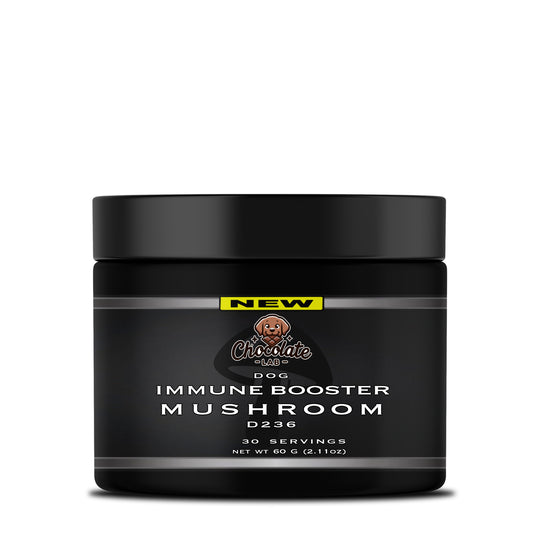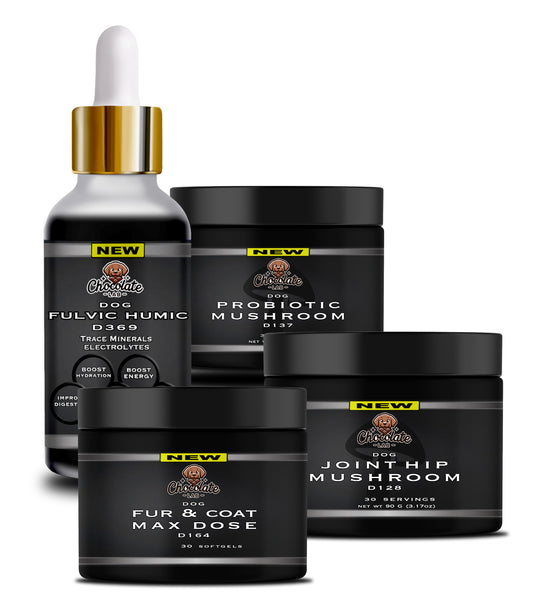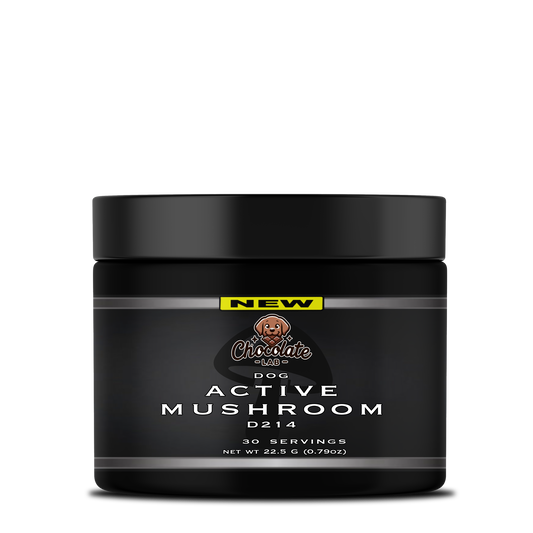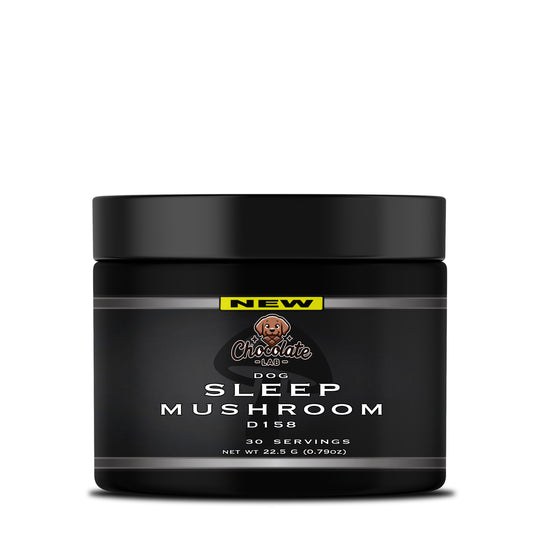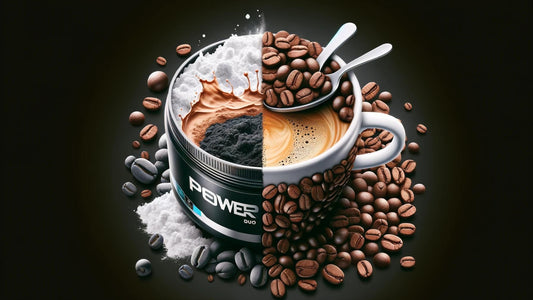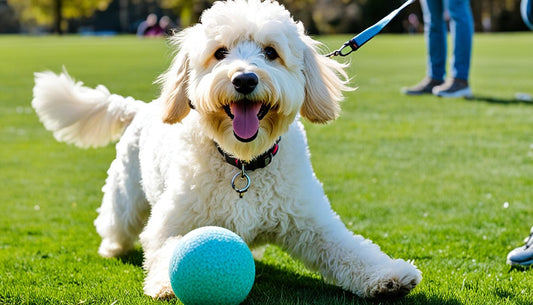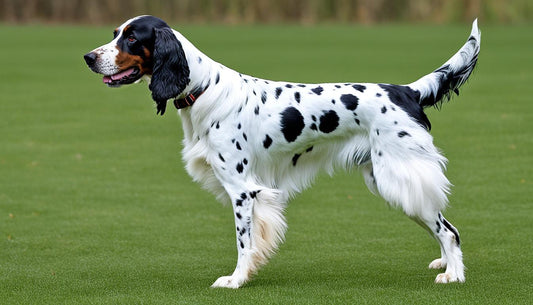
Phantom Poodle: Dog Breed Information, Puppies & Expert Tips
Admired for their elegance and intelligence, poodles are one of the most beloved dog breeds around the globe. But do you know about the phantom poodle and its remarkably distinctive appearance? Far more than the average poodle, this variant exhibits a mesmerizing color pattern that might just steal your heart. This comprehensive guide unveils the necessary insights into phantom poodle care, reveals the breed's unique traits, and unlocks secrets to phantom poodle training to ensure your pet thrives in your family.
Key Takeaways
- Uncover the captivating charm of the phantom poodle's coat, which sets it apart.
- Gain valuable knowledge on providing the best phantom poodle care practices.
- Learn about the breed's distinct traits and how they influence its personality and behavior.
- Discover effective phantom poodle training techniques tailored to its unique intelligence.
- Explore the rewards and considerations of bringing this enigmatic breed into your home.
Introduction to the Phantom Poodle Breed
Enveloped in an aura of mystique, the phantom poodle captivates canine enthusiasts with its unique aesthetic and engaging charm. This section provides essential phantom poodle information and invites you to discover the storied past and special qualities of phantom poodle puppies and adult dogs, including their place within the broader phantom poodle breed.
What is a Phantom Poodle?
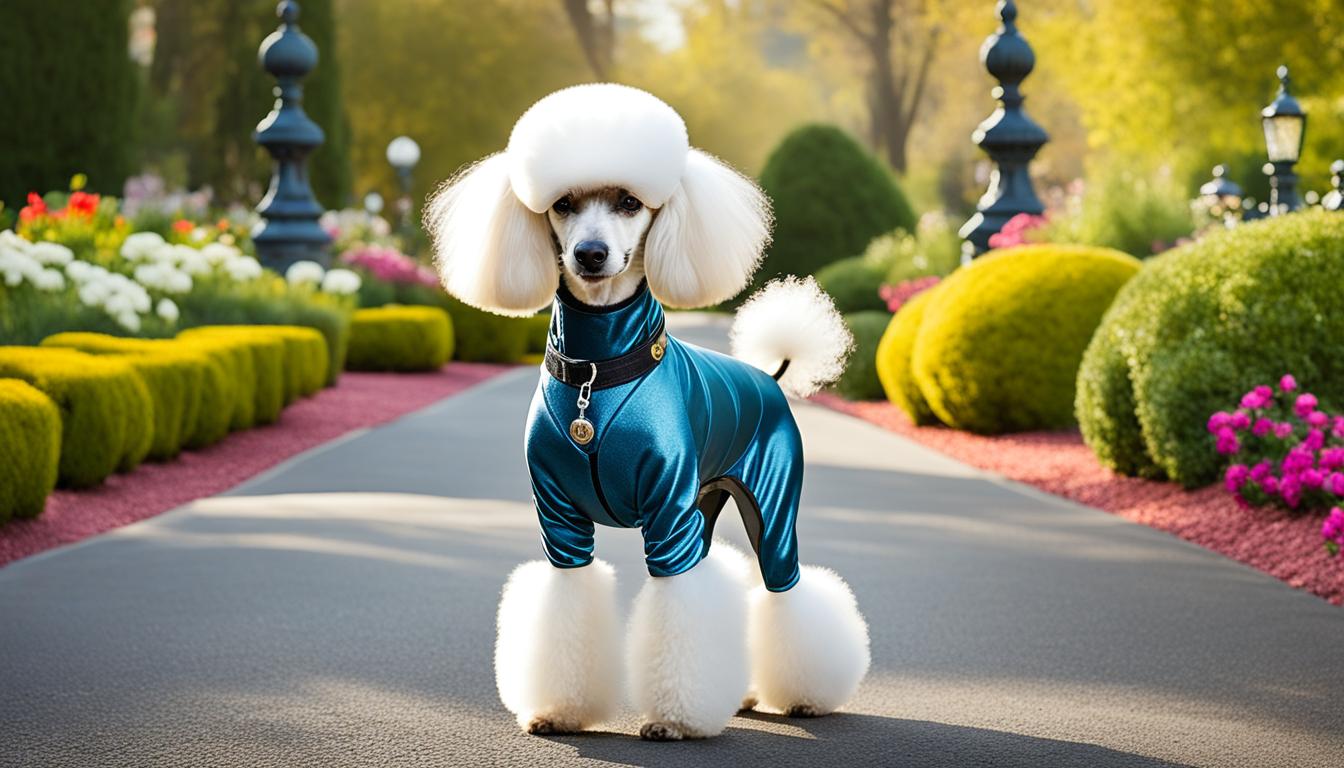
The phantom poodle stands apart from its kin with a striking coat pattern that displays a dazzling contrast of colors. Unlike single-colored poodles, these dogs own a distinctive gene that paints their fur with two colors, one as the primary and the other appearing as well-defined 'phantom' markings. Typically, these secondary hues manifest in particular spots: above the eyes, on the muzzle, chest, legs, and beneath the tail. This coat variation does not affect the breed's reputable intelligence and agility, making them a full package of beauty and brains.
The History and Origin of Phantom Poodles
Tracing the heritage of the phantom poodle breeds a narrative steeped in elegance and versatility. Poodles, historically, have showcased a range in coloring, and the phantom variety is believed to have emerged from the genetic tapestry interwoven throughout their breeding history. While the exact genesis of this pattern remains a topic of interest, aficionados appreciate the unique lineage that has been refined over time to produce today's admired phantom poodles.
| Characteristic | Description | Significance |
|---|---|---|
| Coat Pattern | Two-toned with specific markings | Defines the breed's exclusive appearance |
| Intelligence | Highly intelligent and trainable | Makes them excellent candidates for diverse activities |
| Versatility | Adaptable across various roles and environments | Beloved as both show dogs and family companions |
| Origins | Result of a natural variation within standard poodle breeding | Highlights the rich genetic diversity of the breed |
The endearing nature and sophisticated looks of phantom poodle puppies grow into a lifelong commitment for owners who value both aesthetics and intelligence in their four-legged companions. Embrace the vibrant history and distinct personality that make these dogs an exceptional selection for both experienced and aspiring poodle enthusiasts.
Distinctive Phantom Poodle Colors and Patterns

The beguiling beauty of a phantom poodle lies not just in its graceful demeanor, but also in its distinctive coat. Echoing the grace of its lineage, the phantom poodle's colors and patterns are a feast for the eyes, marking its presence with a regal poise that captures attention wherever it prances. This section delves into the rich tapestry of phantom poodle colors and the intriguing phantom poodle patterns that define this unique breed.
Understanding the Phantom Poodle's Unique Coloration
Intense, vivid, and sharply defined, the coloration of the phantom poodle is no ordinary shade. The breed's palette features a primary color that dominates the coat, offset by a secondary color that appears in specific and predictable patterns. These patterns include clearly marked areas on the cheeks, eyebrows, sides of the snout, throat, chest, legs, and beneath the tail. Enthusiasts often seek these markings as hallmarks of the breed's distinctiveness.
Common Color Combinations in Phantom Poodles
While the contrast in hues can vary greatly among individual dogs, several combinations are commonly seen and highly sought after in phantom poodles. Here's a showcasing of popular color matchups and their beguiling impact:
| Primary Color | Phantom Marking | Visual Impact |
|---|---|---|
| Black | Apricot or Red | Striking contrast, bold appearance |
| Chocolate | Tan or Cream | Warm, rich tones, inviting texture |
| Silver | White or Platinum | Glossy sheen, futuristic allure |
| Blue | Silver or Gray | Sophisticated blend, silky finish |
| Red | Apricot or White | Vibrant intensity, fiery spirit |
Eager to become a sophisticated choice for would-be owners, phantom poodles are as much a visual delight as they are a testament to the diversity within the breed. With each coloration, these dogs showcase their unique identity, ensuring they remain one of the most enchanting and memorable of the poodle variety.
Phantom Poodle Size and Physical Characteristics

When you're considering welcoming a phantom poodle into your home, it's essential to understand the phantom poodle size and phantom poodle characteristics that set this breed apart from others. These dogs are admired for their sophisticated appearance and the distinct two-toned coloration, but there's a lot more to their physique that potential owners should be aware of.
Generally speaking, phantom poodles fall into three size categories: standard, miniature, and toy. The size you choose can have a significant influence on the dog's role in your life, including the space it needs, its exercise requirements, and how it fits into your family dynamic. Here's what you need to know about each size:
- Standard Phantom Poodle: The largest of the bunch, standard poodles are over 15 inches tall at the shoulder and usually weigh between 40 to 70 pounds when they reach adulthood.
- Miniature Phantom Poodle: These are medium-sized poodles, standing between 10 to 15 inches tall and weighing in at about 10 to 15 pounds.
- Toy Phantom Poodle: The smallest variety, toy poodles stand no more than 10 inches tall and typically weigh between 4 to 6 pounds.
Knowing the size of phantom poodles is crucial not just for space considerations but for anticipating the activity level and potential health issues linked to each size.
Aside from their size, phantom poodles showcase a variety of other physical characteristics that potential pet owners find charming. Despite the variety in their size, all phantom poodles share similar traits, including their slender and refined bodies, long legs, and a proud bearing that reflects their regal origins. They also have a curly and dense coat which can vary in texture depending on genetics and grooming. A well-shaped head with alert, dark eyes gives these dogs a look of constant curiosity and intelligence.
| Characteristic | Details |
|---|---|
| Size Category | Standard, Miniature, Toy |
| Body Shape | Slender and Refined |
| Coat Type | Curly, Dense, Varies in Texture |
| Coat Care | Frequent Grooming Required |
| Head Shape | Well-Shaped with Dark, Alert Eyes |
Whether they are the stately standard, the balanced miniature, or the diminutive toy, each phantom poodle presents with a graceful silhouette. The phantom poodle characteristics you come to admire—their poise, their coat, and their expressive faces—are what make the breed so distinctive. When properly cared for, they are not only lovely to look at but are also companionable pets who are just as comfortable at a show as they are curled up on the couch.
The Unique Temperament of a Phantom Poodle
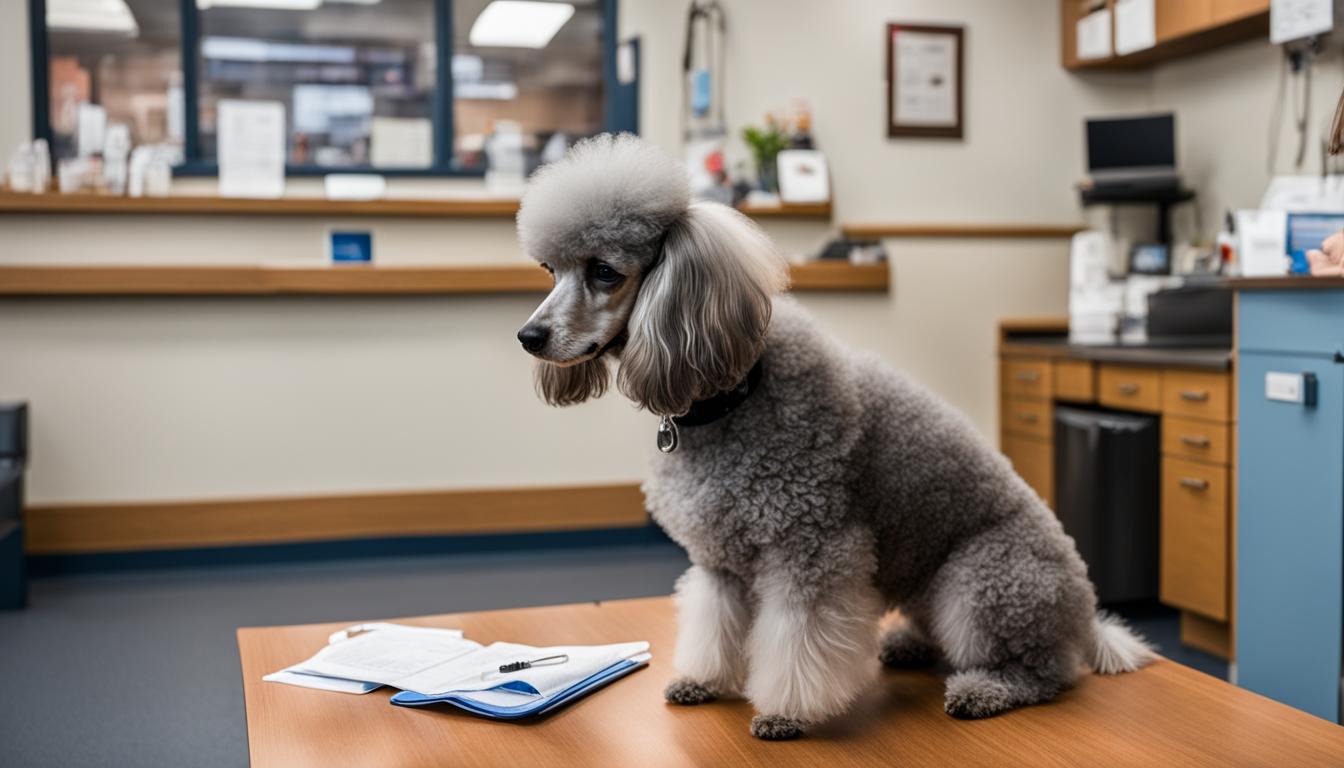
Discovering the essence of the phantom poodle temperament is akin to unraveling a captivating mystery. Renowned for their sophisticated coat patterns, these canines are also beloved for their engaging and distinctive personalities. Deriving from their esteemed lineage, phantom poodles are known for their elegant behavior and affectionate nature, embodying traits that make them exceptional companions.
Behavioral Traits of Phantom Poodles
When delving into phantom poodle behavior, owners can expect a spectrum of intelligence and agility wrapped in a tapestry of lovable quirks. This breed tends to exude grace under pressure and displays an unwavering loyalty that poodle aficionados cherish. Their noteworthy traits include:
| Behavioral Trait | Description |
|---|---|
| Intelligent | Apt at learning and responding to commands, making them excellent partners in both obedience and agility trials. |
| Sociable | Friendly towards people and other animals, making them ideal for households with pets and children. |
| Alert | Highly perceptive to their environment, which makes them good watchdogs. |
| Affectionate | Crave human companionship and form strong bonds with their family members. |
| Adaptable | They adjust well to different living situations if they receive adequate exercise and mental stimulation. |
Social and Emotional Needs of Phantom Poodles
The phantom poodle temperament means they are not just physically but also emotionally engaging. Their social and emotional needs are paramount, requiring owners to invest time in bonding and interactive play. The fulfillment of these needs is essential for nurturing a well-adjusted dog. They include:
- An environment where they can feel safe and loved, reinforcing their natural affectionate nature.
- Regular socialization with other dogs and people to maintain their sociable attitude and prevent any potential for shyness or defensiveness.
- Consistent, positive training sessions that cater to their capacity for learning and problem-solving.
- Emotional engagement through play, conversation, and companionship since they thrive on attention and interaction.
Understanding the phantom poodle temperament is a journey that brings joy and companionship to those who welcome these graceful dogs into their lives. Empathy towards their social needs and consistent engagement is the key to a harmonious relationship with this special breed.
Training Your Phantom Poodle

Embarking on the journey of phantom poodle training is both a rewarding and a bonding experience for both the pet and the owner. From the adorable training phantom poodle puppies to teaching adult dogs sophisticated tricks, each step of the process builds a deeper connection and a well-behaved canine companion. With their keen intelligence and eagerness to please, phantom poodles are gifted learners.
Foundation Training for Phantom Poodle Puppies
The first months of a phantom poodle's life lay the groundwork for their future behavior. Starting with basic commands such as sit, stay, come, and heel is crucial for puppies to understand basic obedience and their role within the household. Housebreaking and socialization are also key areas of focus during these formative weeks.
| Basic Skill | Training Goal | Training Tip |
|---|---|---|
| Sit | Teach the puppy to sit on command. | Use treats as a reward and repeat consistently. |
| Stay | Encourage the puppy to stay in place until released. | Start with short durations and gradually increase. |
| Come | Train the puppy to come when called, regardless of distractions. | Practice in a safe, enclosed space, calling and rewarding with positive reinforcement. |
| Heel | Teach the puppy to walk politely on a leash without tugging. | Begin with short walks, rewarding calm behavior and proper positioning. |
| Socialization | Expose the puppy to a variety of people, places, and other animals. | Take it slow to ensure positive associations are being built with each new experience. |
Advanced Training Techniques for Phantom Poodles
As your phantom poodle matures, their training can advance to more complex commands and tricks. Agility training benefits their physical condition and mental sharpness, while trick training strengthens your bond and keeps them mentally engaged. Service or therapy work is also an avenue for phantom poodles given their temperament and trainability.
- Agility training to utilize their athletic abilities and build confidence.
- Clicker training to teach tricks and more nuanced behaviors.
- Obedience trials to showcase their learning aptitude and discipline.
- Therapy dog training for poodles with a calm disposition and a desire to comfort others.
Patience, consistency, and positive reinforcement are the cornerstones of successful phantom poodle training. Celebrate each achievement with your poodle, fostering an environment of trust and mutual respect.
Suitable Living Environments for Phantom Poodles
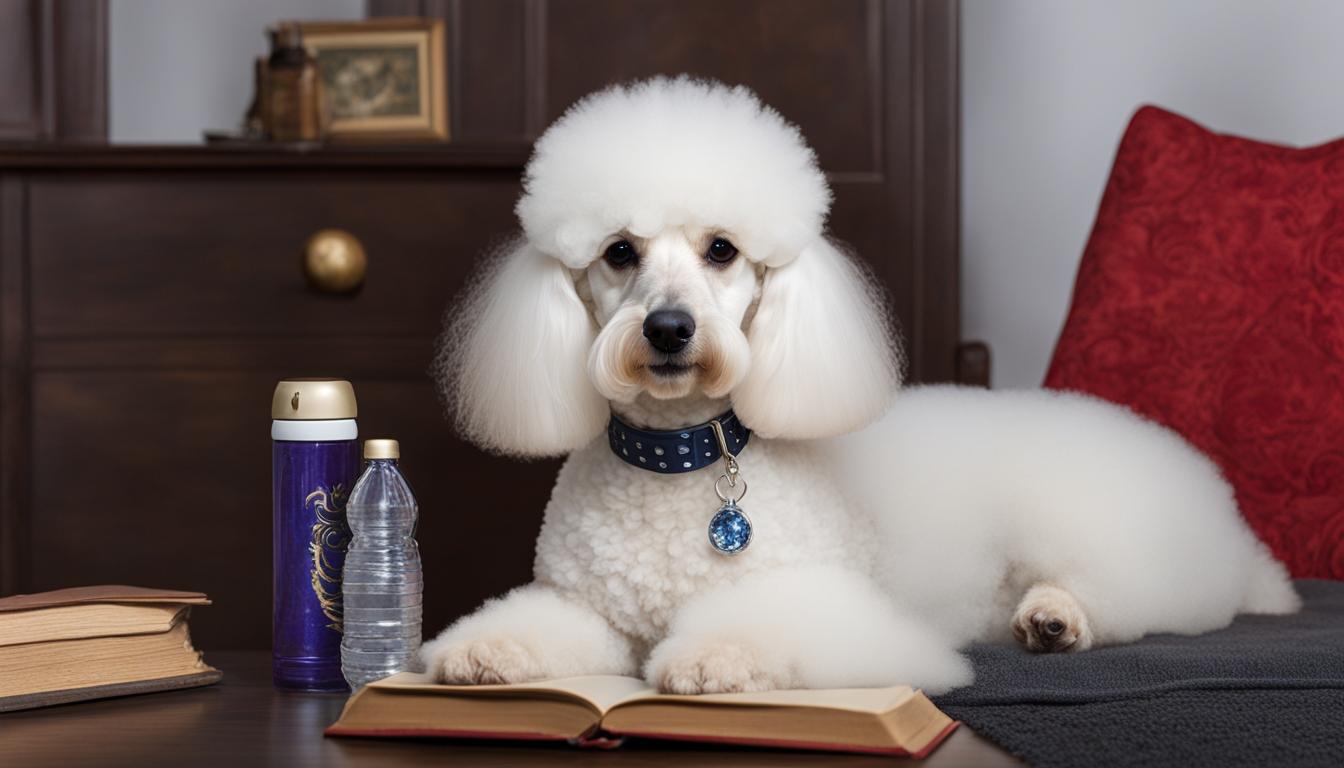
When considering phantom poodle care, the living environment is a chief factor that can significantly impact a dog's well-being. Phantom poodles are adaptable animals capable of thriving in various settings, but there are certain environments where they can flourish more readily. Ideal phantom poodle living environments support their physical needs, stimulate their intelligent minds, and provide ample space for them to express their vibrant personalities.
To ensure that you are providing the best setting for your phantom poodle, here's a rundown of suitable living environments and what they should incorporate:
- Access to Outdoor Space: Phantom poodles benefit from having easy access to a secure yard or garden where they can play and explore.
- Safe Indoor Areas: A safe, comfortable indoor space is crucial, with a designated area for rest and personal space.
- Quiet Zones: Phantom poodles can be sensitive to noise, so living environments should include quiet areas to retreat to.
- Stimulation Opportunities: Environments with a variety of stimulating toys and engagement activities help in maintaining their mental sharpness.
Let's delve deeper into what makes an environment truly harmonious for a phantom poodle:
| Environment Feature | Importance | Examples |
|---|---|---|
| Indoor Comfort | To ensure a stress-free and safe haven | Cozy bedding, absence of hazardous items |
| Exercise Space | Crucial for physical health and to stave off boredom | Backyard, nearby park, safe walking paths |
| Enrichment Activities | Aids in cognitive development and satisfaction | Puzzle toys, agility training setup, varied play routines |
| Temperature Control | Phantom poodles are sensitive to extreme weather | Climate-controlled rooms, shaded outdoor spots |
| Social Interaction | Promotes behavioral health and social skills | Family engagement, pet-friendly community areas |
Each aspect of the living environment is a building block in creating a foundation for phantom poodle care. The more we align these aspects with a phantom poodle's natural inclinations, the more they can lead a balanced, happy life.
As pet owners, we must strive to blend functionality with comfort, ensuring our homes cater to our phantom poodles' needs. This may also involve pet-proofing spaces to prevent accidents and ensuring that any escape routes are securely closed off—maintaining both the safety and stimulation essential for a flourishing poodle.
In summary, the aim is to create a home that not only meets the physical requirements of our pets but also enriches their emotional lives. By addressing their unique needs through the optimization of phantom poodle living environments, phantom poodles can enjoy a high quality of life as beloved members of the household.
Phantom Poodle Care Essentials
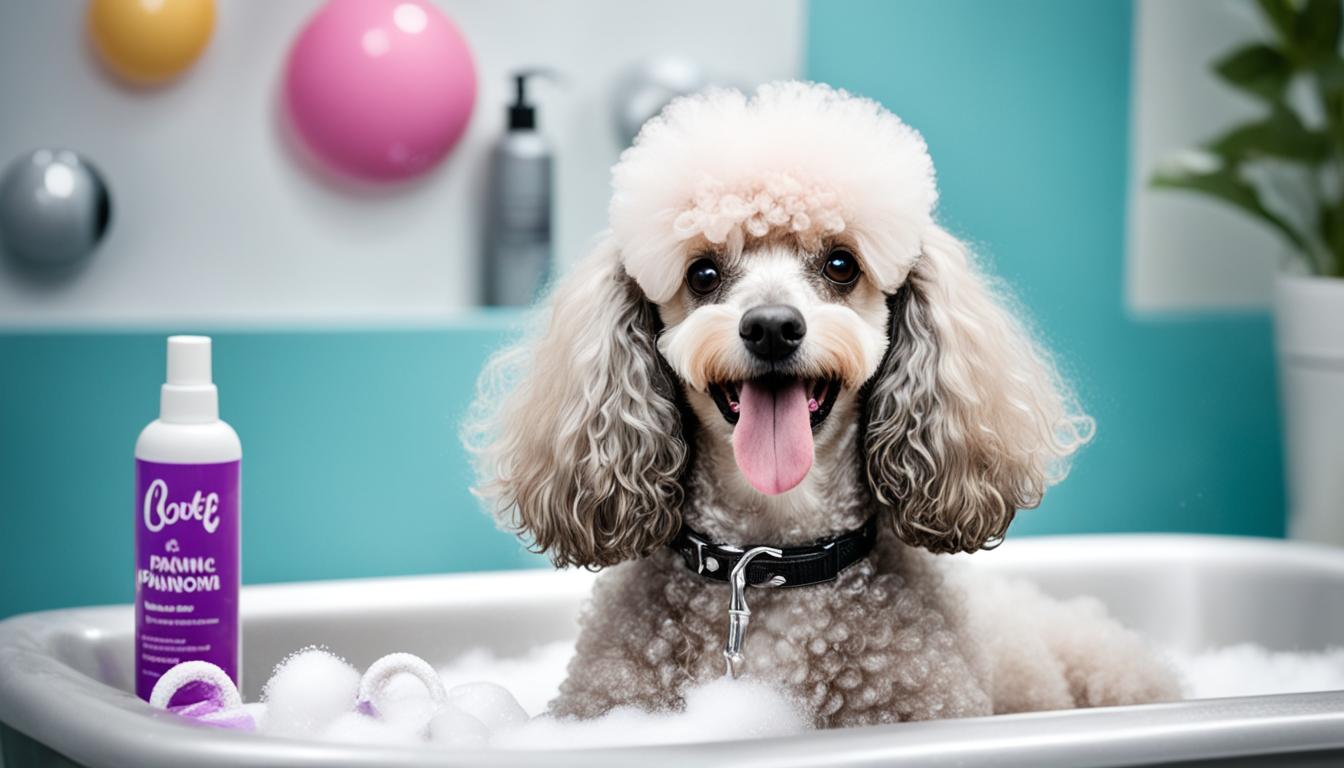
Meticulous care for a phantom poodle is vital to ensure its health and happiness. This includes a regime that encompasses proper feeding habits, nutritional balance, and regular exercise. By mastering these essentials of phantom poodle care, you assure your poodle not only survives but thrives each day.
Feeding and Nutrition for Optimal Health
Effective phantom poodle feeding practices are foundational to their well-being. A high-quality diet suited to their age, size, and energy levels will contribute to their overall health and vitality. High-grade, nutrient-rich kibble mixed with wet food can provide the variety essential in preventing dietary boredom and maintaining excitement at mealtime.
Always remember, the key to a healthy phantom poodle is not just the quantity of food but the quality of its nutrition.
| Life Stage | Recommended Food Type | Frequency |
|---|---|---|
| Puppy | High-Protein Puppy Formula | 3-4 times daily |
| Adult | Adult Maintenance Formula | 2 times daily |
| Senior | Senior Specific Formula | 2 times daily |
Understanding your dog's specific dietary needs is critical. Pay attention to their reaction to different foods, and do not hesitate to consult with a veterinarian for personalized dietary advice on phantom poodle nutrition.
Daily Exercise Requirements for Your Phantom Poodle
Phantom poodle exercise is integral to prevent obesity and to keep your dog mentally stimulated. These agile and spirited dogs require regular physical activities to maintain their health and to channel their boundless energy positively.
- A minimum of 30 minutes to 1 hour of vigorous exercise daily.
- Activities could include brisk walks, runs, or interactive play sessions like fetch or tug-of-war.
- Incorporate mental exercises with physical activity for a well-rounded health benefit.
Exercises need to be adjusted accordingly as your poodle ages or if health issues arise. As always, follow your vet's guidance for the right amount and intensity of exercise for your individual dog's needs.
Regular physical activity will not only keep your phantom poodle fit but also significantly contribute to a stable and cheerful temperament.
Common Health Concerns in Phantom Poodles

Ensuring the well-being of phantom poodles involves being informed about potential phantom poodle health issues that may arise. It's important for pet owners to be aware of common health problems specific to the breed and to engage in preventative measures. Knowing what signs to look for and when to consult a professional is key to maintaining the health of these elegant canines.
Preventative Health Measures
Prevention plays a crucial role in managing the health of any pet, and phantom poodles are no exception. Implementing a proactive health care routine helps mitigate the risks associated with common ailments found in this breed. It's beneficial to adhere to a comprehensive health plan that includes:
- Regular veterinary check-ups for early detection of potential health issues.
- Vaccination schedules tailored to protect against common canine diseases.
- Maintaining a diet rich in nutrients that support coat, joint, and overall health.
- Routine dental care to prevent periodontal disease, which can affect overall health.
- Consistent exercise to support cardiovascular health and prevent obesity.
By embracing these preventative strategies, owners can help their phantom poodles lead long, healthy lives.
When to Seek Veterinary Care
While prevention is the first line of defense, there are times when seeking veterinary care is necessary. Common indicators that warrant professional medical attention for phantom poodles include:
| Signs of Concern | Possible Health Issue | Recommended Action |
|---|---|---|
| Changes in appetite or drinking habits | Can indicate various health problems, from dental issues to kidney disease | Schedule a vet appointment for evaluation |
| Unusual lethargy or decreased activity levels | Might suggest heart problems, arthritis, or other underlying conditions | Contact your vet to assess the need for medical intervention |
| Sudden weight loss or gain | Could reflect metabolic disorders or hormonal imbalances | Consult with a vet to determine cause and treatment |
| Persistent skin irritation or hair loss | Often associated with allergies or skin infections | Seek veterinary diagnosis and treatment options |
| Difficulty walking or reluctance to move | Potential signs of hip dysplasia or other joint issues | Obtain a professional assessment from a vet |
Observing your phantom poodle for signs of distress and acting swiftly can make a significant difference in the management of their health.
When in doubt, a veterinarian's guidance can be invaluable in ensuring the ongoing health and comfort of your beloved poodle.
Phantom Poodle Grooming and Maintenance

Mastering phantom poodle grooming is essential to maintaining the health and appearance of your elegant companion. With their characteristic two-toned coat, phantom poodles require a consistent grooming routine to look and feel their best. This section offers practical grooming tips and maintenance rituals to keep your poodle's coat in show-worthy condition while ensuring cleanliness and health.
Regular Brushing: For optimal coat maintenance, regular brushing is the cornerstone of grooming phantom poodles. This prevents matting and tangling, which can lead to skin irritation and discomfort. Here’s a breakdown of what your brushing routine should entail:
- Use a high-quality slicker brush to remove tangles and loose fur.
- Brush at least three times a week to maintain the coat's smooth texture.
- During shedding seasons, increase brushing frequency to manage loose hair.
Professional Grooming: While regular home maintenance is vital, periodic appointments with a professional groomer should not be overlooked. Professional groomers are equipped to handle the specific needs of phantom poodle grooming, including:
- Customized haircuts that maintain the integrity of the phantom poodle’s unique coat pattern.
- Ear cleaning to prevent wax buildup and potential infections.
- Nail trimming for optimal paw health.
Bathing Rituals: Although poodles are known for their hypoallergenic coats, they still require regular bathing to remove dirt and potential allergens. Here's how to ensure a successful bath time:
- Avoid over-bathing, as it can strip natural oils from their coat and skin.
- Use a dog-specific shampoo that caters to sensitive skin.
- Ensure a thorough rinse to prevent shampoo residue.
Coat Clipping and Scissoring: To maintain the phantom poodle's specific coat pattern, strategic clipping and scissoring are key. Owners should:
- Familiarize themselves with the pattern and growth direction of their dog’s coat.
- Decide on the desired length and style befitting their pet's lifestyle and personal preference.
- Use sharp, dog-appropriate grooming shears for a precise cut.
With diligent care and attention, your phantom poodle's coat can be a testament to your devotion as a pet owner. Below is a schedule to help you establish a regular grooming regimen:
| Grooming Task | Frequency | Tools Required |
|---|---|---|
| Brushing | 3x weekly | Slicker brush, metal comb |
| Bathing | Monthly | Shampoo for sensitive skin |
| Ear Cleaning | With every bath | Ear cleaning solution, cotton balls |
| Nail Trimming | Monthly | Nail clippers, styptic powder |
| Haircuts | Every 6-8 weeks | Grooming shears, clippers |
Remember, the key to successful phantom poodle grooming lies in regularity and technique. Investing time in your poodle's grooming not only fosters good health but also strengthens the bond between you and your pet. Moreover, satisfied with their immaculate condition, your poodle will undoubtedly beam with the pride they are renowned for.
For those ready to embrace the world of phantom poodle grooming, remember that patience and practice pave the path to perfection. Honor the unique beauty of your poodle with a commitment to their care that ensures they always present their best paw forward.
The Importance of Socialization for Phantom Poodles
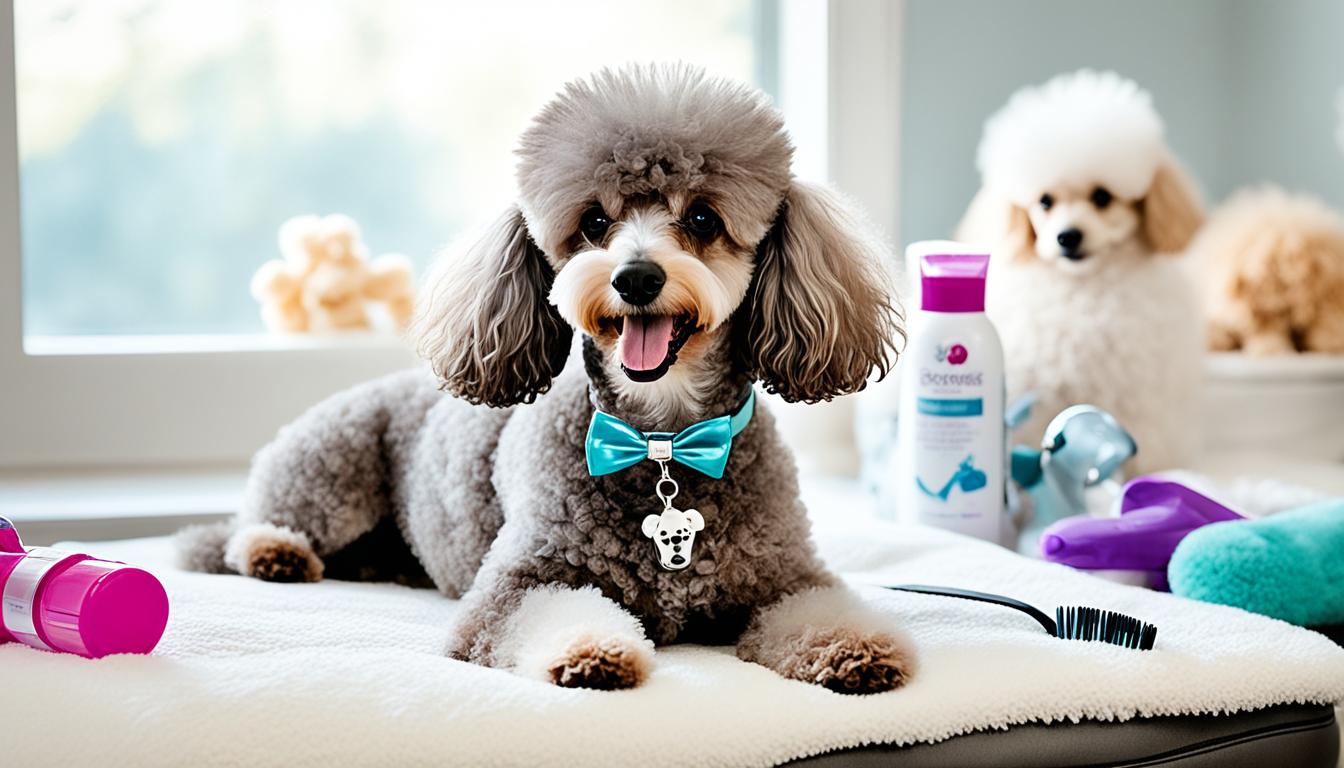
Embarking on phantom poodle socialization is not merely beneficial; it is a crucial aspect of owning this breed. A well-socialized phantom poodle is often a well-adjusted pet that can confidently navigate different scenarios and interact harmoniously with various beings. From the bustling environment of a dog park to the quiet encounter with a neighborhood cat, socialization shapes your poodle’s perception of the world and its inhabitants.
Comprehensive socialization strategies encompass a variety of experiences. Experts often recommend introducing your phantom poodle to a wide array of people, including children, seniors, and people of all appearances and demeanors. Additionally, exposing your dog to other animals, not just other dogs but cats and other household pets, is crucial in cultivating a pet of tolerant and affable disposition.
- Begin socialization efforts during the puppy phase, as this is when your dog is most impressionable.
- Ensure encounters are positive and controlled, avoiding overwhelming your pet.
- Gradually introduce your phantom poodle to different environments, sounds, and experiences.
- Positive reinforcement, such as treats and praises, enhances the socialization process.
- Consistency in socialization practices leads to the best outcomes.
Structured socialization classes can be significantly valuable, providing a safe and controlled environment for your poodle to interact with a variety of dogs under professional supervision. Furthermore, regular visits to dog-friendly parks or stores can offer real-world experience that contributes voluminously to your dog's social repertoire.
| Socialization Method | Benefit | Considerations |
|---|---|---|
| Puppy Classes | Teaches basic commands and interactions | Select a class with positive training methods |
| Home Visits | Acquaints with various people and indoor settings | Keep guest interactions calm and positive |
| Public Outings | Exposes to diverse crowds and stimuli | Begin with less crowded areas to avoid stress |
| Playdates | Encourages friendly behavior with other pets | Monitor play for signs of aggression or fear |
Remember, phantom poodle socialization isn't a luxury; it's a necessity. Your efforts will cultivate a phantom poodle that's both a delight in your home and a commendable representative of its breed in the public eye. Embracing a diversity of social experiences enriches the lives of both your phantom poodle and yourself, enabling a journey full of shared adventure and mutual trust.
Through thoughtful and persistent socialization efforts, you will unlock the full potential of your phantom poodle's adaptable and sociable nature, setting the stage for a lifetime of companionship and joy.
Finding a Reputable Phantom Poodle Breeder
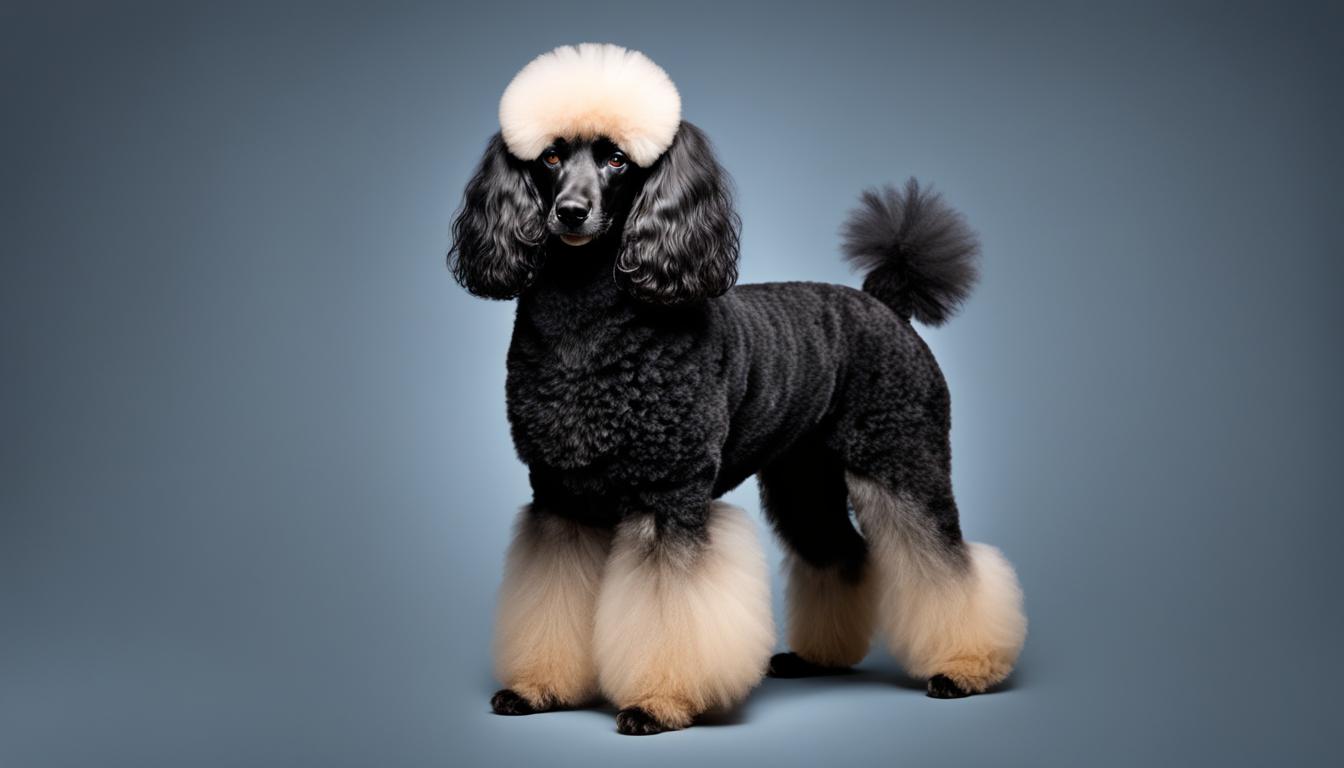
Embarking on the quest to bring a phantom poodle into your home begins with identifying a reputable phantom poodle breeder. This is a crucial step, as the breeder’s practices significantly influence your future pet’s health, temperament, and overall adjustment to family life. By engaging with ethically-minded breeders, you contribute to promoting and preserving the welfare and purity of the breed.
To ensure you make an informed decision, let us guide you through important queries that pinpoint reputable breeders and underscore the essence of ethical phantom poodle breeding.
Important Questions to Ask a Breeder
When interacting with potential breeders, clarity is your greatest asset. A trusted breeder should be transparent, knowledgeable, and approachable. Consider these critical questions as part of your discussion:
- Can you provide a full history of the puppy's lineage and health screenings?
- How do you ensure the health and well-being of the puppies in your care?
- Are your breeding practices aimed at enhancing the breed’s characteristics?
- Can I meet the parent dogs and see the conditions they live in?
- What kind of post-adoption support do you offer to new owners?
The responses you receive can reveal a lot about the breeder’s priorities and approach to their profession. Detailed unscripted responses typically signal a breeder's deep engagement and commitment to their dogs.
Recognizing Ethical Breeding Practices
Understanding the hallmarks of ethical breeding practices can greatly assist you in selecting the right breeder. Ethical breeders will demonstrate a transparent commitment to the health, genetics, and temperament of their dogs, ensuring a high standard of breeding. Below is a table listing practices that highlight ethical breeding:
| Practice | Description | Impact |
|---|---|---|
| Health Testing | Conducting genetic and veterinary checks to minimize hereditary health issues. | Supports the long-term health of the breed and individual puppies. |
| Living Conditions | Providing a clean, spacious, and enriched environment for breeding dogs. | Ensures dogs and puppies develop in a humane, stimulating setting conducive to physical and mental well-being. |
| Limiting Litters | Adhering to responsible breeding frequencies to prevent overbreeding. | Protects the health of the mother and ensures the focus is on quality, not quantity. |
| Socialization | Puppies are introduced to varied experiences to develop well-rounded temperaments. | Prepares puppies for a smooth transition to their new homes and lives. |
| Life Commitment | Maintaining a lifelong interest in and commitment to the welfare of their bred dogs. | Ensures dogs have a safety net and demonstrates breeders' dedication beyond the point of sale. |
An ethical breeder will be proud to discuss their practices and should also be interested in you as an owner. It’s a two-way relationship where both parties aim for the well-being of the dog.
Ultimately, the effort you invest in finding a responsible breeder is returned in the joy of a healthy, happy phantom poodle who will be a cherished member of your family for years to come.
Is the Phantom Poodle the Right Pet for You?
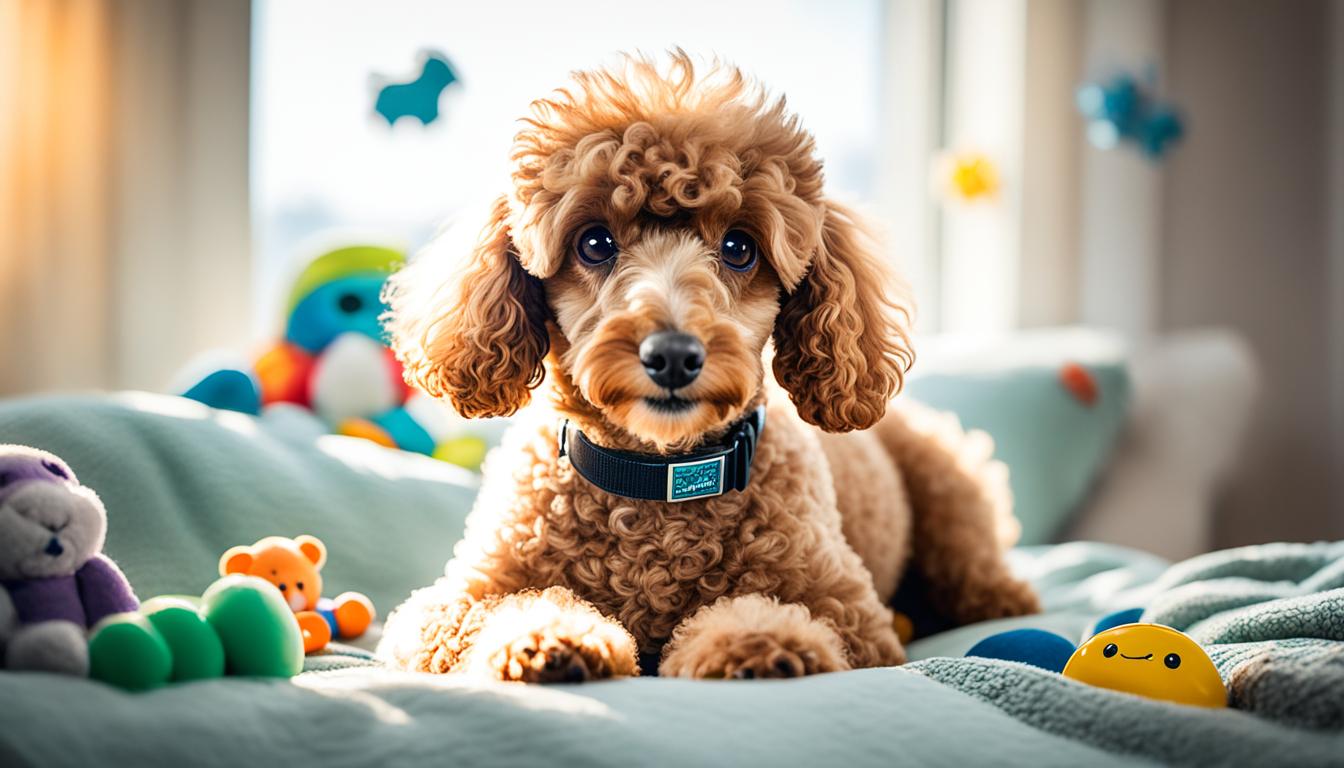
When contemplating the addition of a dog to your life, factoring in breed-specific characteristics is crucial. With a wealth of phantom poodle information available, it becomes clear that this breed's unique set of needs must align well with your lifestyle for a harmonious relationship. Here, we outline vital considerations to determine if a phantom poodle is the ideal canine companion for you.
Firstly, assess your living environment. Phantom poodles thrive in settings where they have space to play and owners with time to dedicate to their physical and mental well-being. Reflect upon the time and energy you can commit to daily exercise, grooming, and affection.
Additionally, understand that this breed's intelligence requires mental stimulation beyond the basic play; they do best with owners who appreciate and nurture their cognitive abilities. Would you enjoy engaging in training exercises and providing interactive toys? Consider whether such engagements fit into your routine.
Another factor to weigh is grooming. The phantom poodle's distinct coat demands regular brushing, professional grooming sessions, and bathing routines. Ask yourself if you’re ready to commit to sustaining their striking look which is both a responsibility and a delight.
Lastly, social engagement plays a significant rolse in the well-being of a phantom poodle. This breed flourishes in interactive and social environments. Can you offer a lifestyle that includes social outings and opportunities for your pet to engage with other dogs and people?
For your benefit, let us illustrate the compromise between a prospective owner's lifestyle and the needs of a phantom poodle:
| Phantom Poodle Need | Your Lifestyle Consideration |
|---|---|
| Exercise Requirements | Can you provide regular, active playtime and walks? |
| Intellectual Stimulation | Are you eager to engage in training and mentally stimulating games? |
| Grooming and Maintenance | Will you dedicate time to regular grooming routines? |
| Social Interaction | Do you have a social circle with pets or the desire to frequent dog-friendly spaces? |
A phantom poodle can bring immense joy into your life with their loyalty and charm. However, making an informed decision involves matching your capacity to nurture their needs with their potential to fulfill your expectations as a pet.
In summation, reflecting upon these considerations helps ascertain whether a phantom poodle aligns with your lifestyle and capacity for care. If your daily life accommodates the joyous commitment of caring for a dog with such distinctive needs, then a phantom poodle may be the perfect new addition to your family.
Phantom Poodle Information: Understanding Your Dog’s Needs
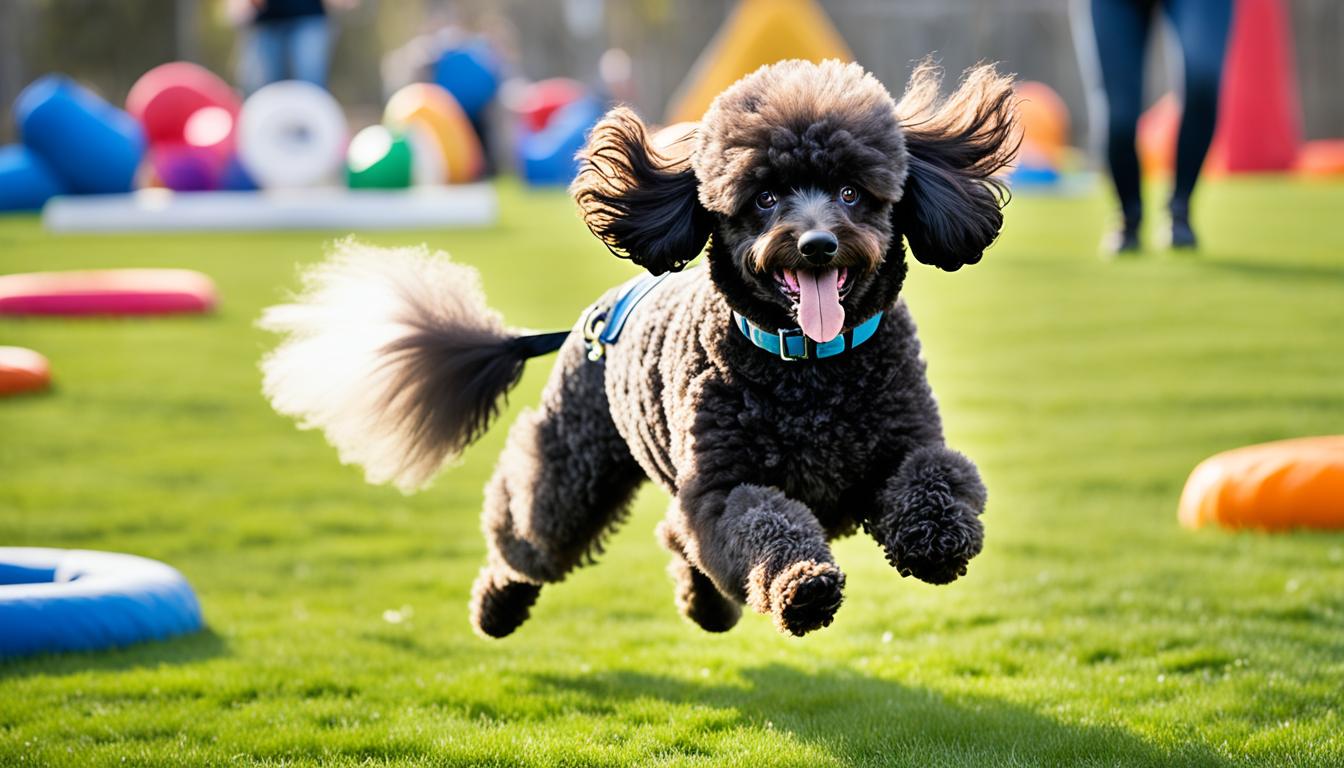
Effective phantom poodle care hinges on understanding and catering to the unique requirements of this distinctive breed. Renowned for their intelligence and striking appearance, phantom poodles possess specific needs that, when met, ensure a happy and healthy life. This section is dedicated to offering valuable phantom poodle information that covers their mental, physical, and social demands.
Mental Stimulation: At the forefront of phantom poodle care is the necessity for mental challenge. This breed revels in tasks that test their wits and keep their minds active. Here are some stimulating activities:
- Interactive toys that require problem-solving
- Regular training sessions with varied commands
- Puzzle feeders that engage them during mealtime
Veterinary Care: Regular vet visits are paramount for maintaining your phantom poodle's health. Here's what to focus on:
- Schedule annual check-ups and vaccines
- Discuss age-appropriate health screenings
- Monitor any breed-specific health concerns with your vet's guidance
Social Needs: Thriving on companionship, phantom poodles seek interaction. Balance their social calendar with:
- Daily family time and play
- Regular walks in the park to meet other dogs and people
- Enrollment in doggy daycare for social enrichment
Understanding and responding to the intricacies of phantom poodle care fosters a nurturing environment for your dog, paving the way for a joyful and fulfilling companionship.
The following table provides a concise overview of what to incorporate into your routine to ensure comprehensive care:
| Aspect of Care | Details | Frequency |
|---|---|---|
| Mental Stimulation | Training, puzzles, games | Daily |
| Veterinary Check-ups | Health evaluations and vaccines | Annually or as recommended |
| Exercise | Walks, playtime, agility training | Daily |
| Socialization | Interaction with humans and pets | Regularly |
| Diet and Nutrition | High-quality food tailored to age and size | Meals twice daily, treats occasionally |
| Grooming | Brushing, bathing, nail clipping | Brushing multiple times per week; bathing as needed |
Integrating these elements of care into everyday life guarantees a well-rounded approach that satisfies the multifaceted nature of phantom poodles. By embracing the compilation of practices outlined above, owners will be well-equipped to provide a supportive environment for their phantom poodles to thrive.
Phantom Poodle Puppies: Preparing for Your New Addition
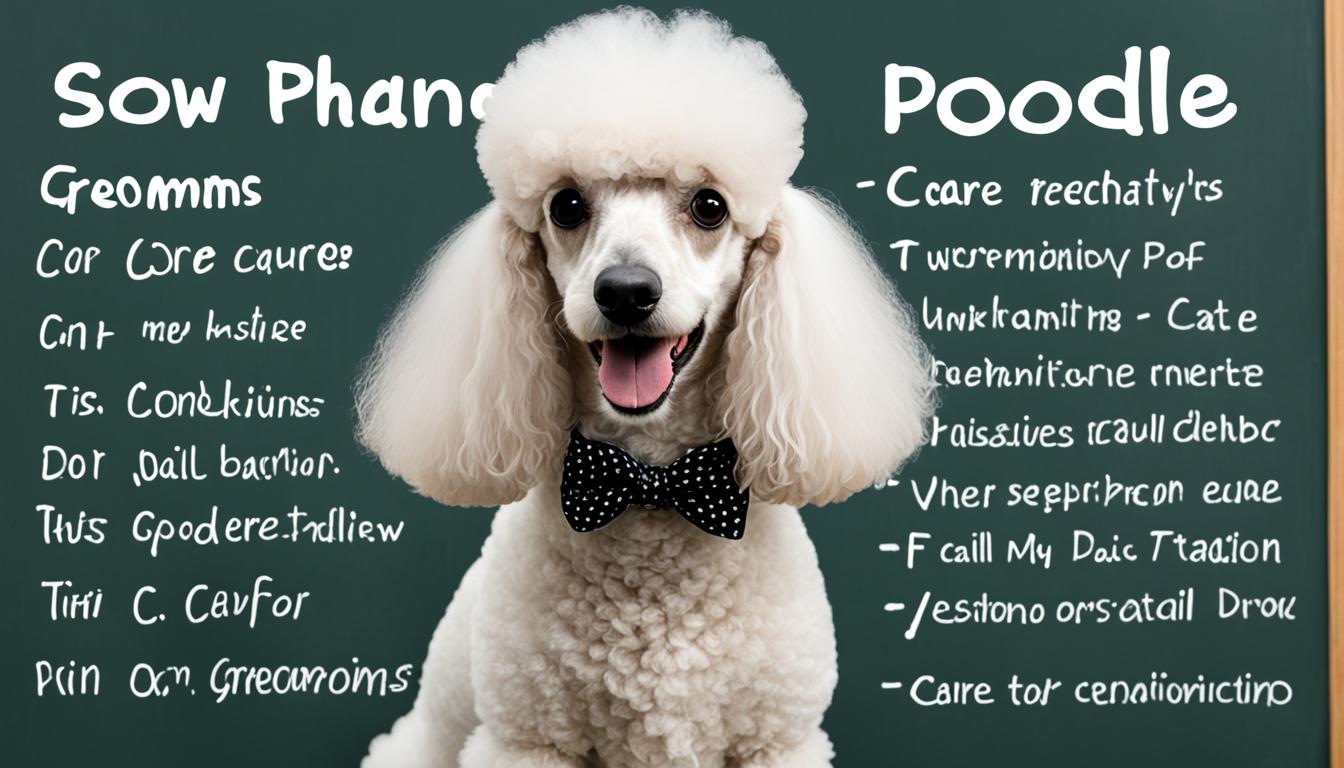
Bringing a phantom poodle puppy into your life marks the beginning of an extraordinary journey filled with joy, playfulness, and companionship. To ensure a smooth transition for both you and your new furry friend, it's important to prepare your home and devise a thoughtful integration plan. Phantom poodle puppy preparation not only involves setting up your living space to meet the needs of an energetic puppy but also creating an introduction strategy to help your young poodle adjust to its new family.
Setting Up Your Home for a Puppy
Before your phantom poodle puppy prances through the front door, puppy-proofing your home is essential. Secure electrical cords, hazardous substances, and small objects that could pose a choking risk. Designate a safe, cozy space for your puppy that includes a comfortable bed, accessible water dish, and age-appropriate toys. Remember to install gates or barriers as needed to define the puppy's play area and restrict access to off-limits zones. Doing so not only keeps your phantom poodle safe but also sets clear boundaries from the start.
Introducing a Phantom Poodle Puppy to Your Family
The arrival of phantom poodle puppies is an event filled with excitement. Introduce your phantom poodle puppy to your family gradually, allowing everyone to bond at a comfortable pace. Encourage gentle handling and present treats as rewards for calm interactions. Establish a routine early on, encompassing feeding times, potty breaks, and play sessions to help your puppy settle into its new environment. With patience and consistency, your phantom poodle will soon blossom into a well-adjusted and cherished family member.
FAQ
What is a Phantom Poodle?
A Phantom Poodle is a type of poodle with a specific color pattern. Unlike other solid-colored poodles, Phantom Poodles have a distinct two-color pattern, with the secondary color appearing in specific locations on the dog's coat, such as above the eyes, on the sides of the snout, and beneath the tail.
Can you provide information on the history and origin of Phantom Poodles?
Phantom Poodles share their history with the standard poodle breed, originally bred as water retrievers. The unique phantom coloration is a result of specific genetic inheritance, but they are part of the same breed as other poodles, no matter the color or pattern.
What are some common color combinations in Phantom Poodles?
The most common color combinations for Phantom Poodles are black with apricot or tan markings, chocolate with tan or cream markings, and silver with cream or white markings. The markings are typically in specific locations and are what distinguish the phantom coloring from other poodle coat patterns.
What size are Phantom Poodles?
Phantom Poodles come in the same size varieties as other poodles: toy, miniature, and standard. Toy Phantom Poodles are under 10 inches tall at the shoulder, Miniatures stand between 10 and 15 inches, and Standards are over 15 inches. Their size will depend on which category they fall into.
What is the temperament of a Phantom Poodle?
Phantom Poodles are known for their intelligent, friendly, and active temperament. They are often eager to please and can be very affectionate with their families. Like all poodles, they are also highly trainable, making them excellent companions.
How do I train my Phantom Poodle?
Training your Phantom Poodle should focus on positive reinforcement and consistency. Start with basic obedience training, including commands like sit, stay, and come. Socialization from a young age is important, and consider advanced training or dog sports to keep your intelligent pup mentally stimulated.
What type of living environment is best for a Phantom Poodle?
Phantom Poodles adapt well to various living environments, from apartments to larger homes with yards. Regardless of space, they need regular exercise and mental stimulation. It's also important to ensure they live indoors with their families, as they thrive on social interaction.
What are the essential care practices for a Phantom Poodle?
Essential care for a Phantom Poodle includes providing a balanced diet, regular vet check-ups, daily exercise, and mental stimulation. It's also important to maintain their dental hygiene and to keep their coat groomed to prevent matting.
What are some common health concerns for Phantom Poodles?
Common health concerns for Phantom Poodles include hip dysplasia, eye disorders, skin issues, and bloat. Regular health checkups and a proactive approach to health care can help to mitigate these risks.
How much grooming does a Phantom Poodle need?
Phantom Poodles require regular grooming to maintain their coat's health and appearance. This includes regular brushing, clipping every 4-6 weeks, ear cleaning, and nail trimming. Grooming gives you the chance to check for any skin issues or parasites as well.
Why is socialization important for Phantom Poodles?
Socialization is crucial for Phantom Poodles to develop confidence and good behavior. Exposing them to various people, pets, and environments from a young age can help prevent the development of fear or aggression and ensures that they grow into well-adjusted dogs.
How can I find a reputable Phantom Poodle breeder?
To find a reputable Phantom Poodle breeder, look for breeders who perform health screenings on their breeding dogs, offer a solid health guarantee, have in-depth knowledge of the breed, and are transparent about their breeding practices. Visit their breeding facility if possible, and ask for references from previous buyers.
Is the Phantom Poodle the right pet for me?
The Phantom Poodle can be a great pet for individuals or families who have time for regular grooming, training, and exercise. Consider whether your lifestyle can accommodate their needs for attention, mental stimulation, and physical activity before deciding.
What do I need to know about caring specifically for a Phantom Poodle?
Caring for a Phantom Poodle requires understanding their unique needs, such as sensitivity to certain climates due to their coat, a strong desire for companionship, and potential for genetic health conditions. Regular exercise, mental challenges, and social interaction are key facets of their care.
How should I prepare my home for a Phantom Poodle puppy?
Preparing your home for a Phantom Poodle puppy involves puppy-proofing your space to remove potential hazards, setting aside a designated area with a bed and toys for the puppy, and making a consistent schedule for feeding, training, and bathroom breaks.

